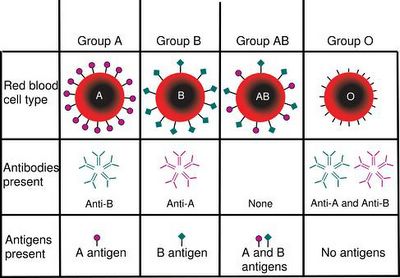An excellent and comprehensive site to start learning about blood is PBS's Red Gold, the epic story of blood . One will learn about the basics of blood (what blood is made of; how it's made; its function) and about the history of blood. A blood history timeline tracks scientific development in the understanding and use of blood from approximately 2500 BCE to the present. There is a discussion of blood practices such as bloodletting, using leeches and transfusions and a section on major innovators and pioneers in the field of blood. To round it all out, there are lesson plans suitable to be used in the classroom. The PBS site has a short article on blood groups and blood typing. If anyone is interested in blood types and genetics, a good site to visit is the Blood Type Tutorial by the University of Arizona.

Blood type is determined, in part, by the ABO blood group antigens present on red blood cells

Is anyone looking to have some fun? The site Blood Groups, Blood Typing and Blood Transfusions , part of the Nobel e-museum, is just the ticket. First, one should read through the article (to become familiar with the nomenclature), then proceed onto the game. In the blood typing game*, three patients need transfusions. It is the reader's job to determine their blood type and give them the correct blood. Good luck. (Just as an aside, the Nobel e-museum site is a great site. It is fun and educational with great labs.)
After one's successful stint in ER, perhaps a visit to the The Pfizer Foundation Biochemistry Discovery Lab ** is in order. This interactive lab seeks to discover what molecules are found in scabs. Doing an experiment online is great; no mess; no mistakes and the right result every time. One learns that the fibrinogen molecule in blood react with the thrombin molecule (made after a cut happens) to form fibrin which clump together and form a clot.
The site, Cells Alive! , has a scanning electron micrograph of a blood clot. There is also a scanning electron micrograph of red blood cells. The site hosts an animation that compares the size of a red blood cell to a human hair, dust mite, pollen grain and certain bacteria and viruses. The reader might like to check out Anatomy of a splinter to see white blood cells in action.
I never knew blood was so interesting and fun. And I didn't faint.
*needs flash plug-in
**needs Shockwave plug-in
No comments:
Post a Comment